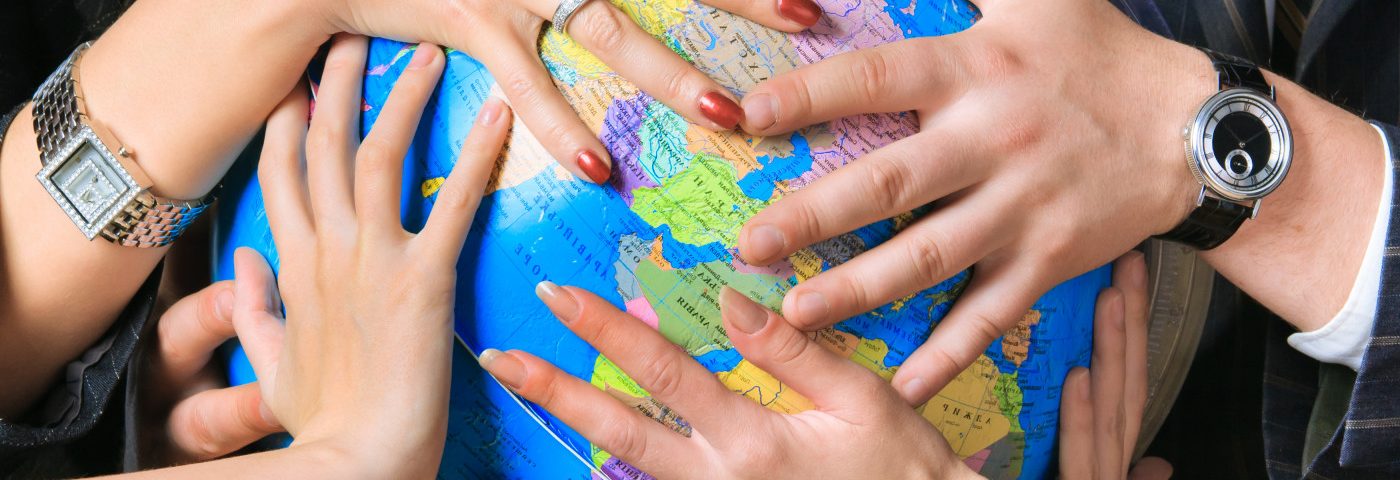First in a series.
Dear caregivers and assistants,
My name is Reo Kobayashi. I’ve lived with spastic quadriplegic cerebral palsy and visual impairment all my life, and have had many assistants and caregivers over the years, including at school, at home, and out in public.
Pictured below is my assistant, friend, and neighbor, Amber Bhatnagar, who helps me type some of my columns. She makes it possible for me to continue what I’m doing here each week at BioNews Services, the parent company of this website. She allows me to be the columnist/journalist that I wanted to be, even though I have a physical circumstance that makes it extremely difficult. She helps me bridge the gap so that I can reach my full potential. I will be forever grateful.

I have five pieces of advice for caregivers and assistants to people with physical disabilities who are reading this. I’m writing through the lens of the United States, where I live.
Tip 1: Always treat your clients, no matter how old they are, with the same amount of respect and dignity that you give your parents or anyone else. In my case, I need help with all bodily functions (going to the restroom, bathing, eating) and physical activities (maneuvering, cooking), so in a sense, my caregiver becomes an extension of my body. Imagine that you have a mind that functions normally, but is trapped in a body that does not function properly. How would you want to be treated?
Tip 2: If you are a one-on-one aide with a student in elementary school, whenever possible, give your student the freedom to interact with their peers on their own, under your supervision. Do not interrupt your student’s conversations and always observe from afar, if possible. I’m not asking you to leave the situation, but give your students space to grow as individuals and find their own way, with your guidance.
One-on-one aides in public schools typically try to facilitate independence in their students, but the scope of the word is very broad; independence for people with physical disabilities is different than the typical definition. I will never be fully independent in terms of my physical abilities, so if you have a student like me, it’s important that you foster their mental independence and strengthen their social skills. Enhance their strengths, as well, because these strengths will take them far in life.
Tip 3: Please do not speak for your students. This also goes for community aides, especially as the person gets older. Give them more personal time to interact with peers, and if you are dealing with adult clients, please allow them to be your boss. Have them decide what time and days you will meet. If you are in a public situation where the client is with some of their acquaintances and the client says, “I don’t need you now. I will call you when I’m ready,” please leave the situation until the client calls you back.
Tip 4: This is for in-home caregivers who do the bathing, cleaning, and other in-home tasks. When it comes to bathing or transferring, make sure you always follow the instructions of the client or the client’s parents, because there are certain things that you need to be aware of prior to working with them.
Tip 5: Get to know your patient’s medical team. I understand that in the U.S., the HIPAA Privacy Rule makes it hard, but it is vital that you ask your clients for the ability to observe, especially physical therapy sessions. The therapist can train you and give you tips on transferring, among other things. They might even give you, in some circumstances, a program that the client must do at home or out in the community, which you can help facilitate.
I hope these tips have provided some insight and that you find them helpful.
Next week: Tips for members of the community at large.
***
Note: Cerebral Palsy News Today is strictly a news and information website about the disorder. It does not provide medical advice, diagnosis, or treatment. This content is not intended to be a substitute for professional medical advice, diagnosis, or treatment. Always seek the advice of your physician or other qualified health provider with any questions you may have regarding a medical condition. Never disregard professional medical advice or delay in seeking it because of something you have read on this website. The opinions expressed in this column are not those of Cerebral Palsy News Today or its parent company, BioNews Services, and are intended to spark discussion about issues pertaining to cerebral palsy.

